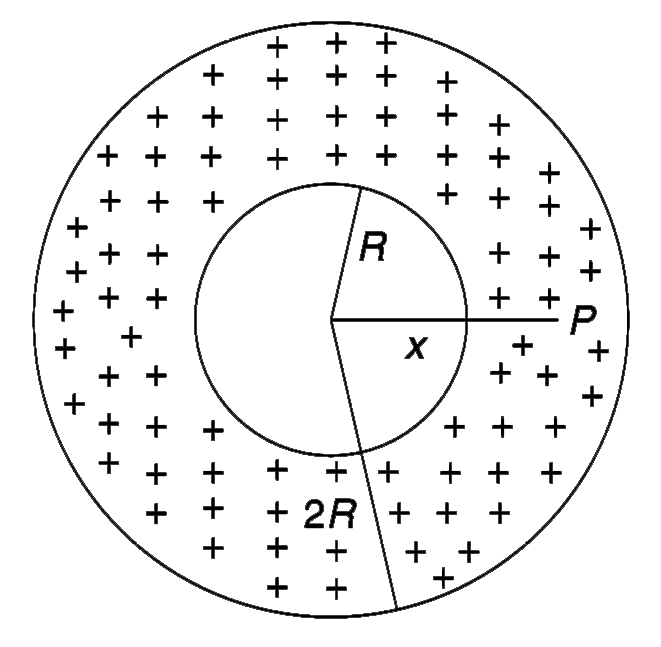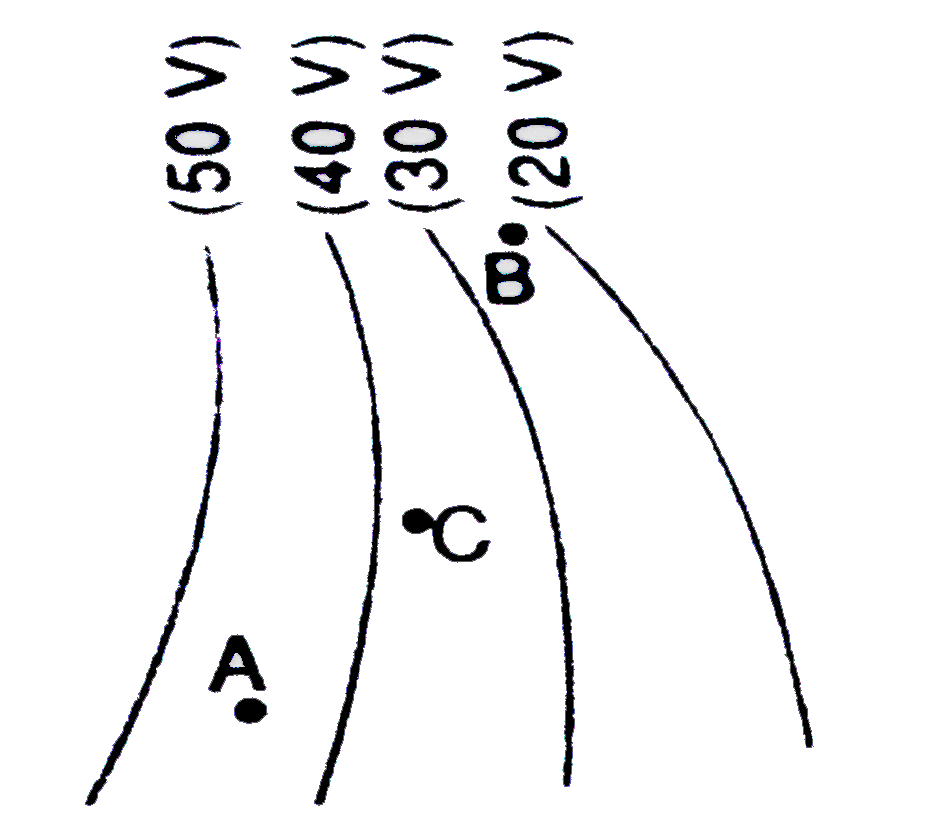The shape of equipotential surfaces due to an isolated charge is
Concentric spherical shells and the distance between the shells increases with the decrease in electric field
Concentric spherical shells and the distance between the shells decreases with the decrease in electric field
Equi-spaced concentric spherical shells
Changes with the polarity of the charge
The correct Answer is:A
To determine the shape of equipotential surfaces due to an isolated charge, we can follow these steps:
Step 1: Understand the Concept of Equipotential Surfaces
Equipotential surfaces are surfaces where the electric potential is constant. This means that if you move along the surface, the potential energy does not change.
Hint: Remember that equipotential surfaces are related to electric field lines, and they are always perpendicular to these lines.
Step 2: Consider the Nature of an Isolated Charge
An isolated charge creates an electric field that radiates outward (for a positive charge) or inward (for a negative charge). The strength of the electric field decreases with distance from the charge.
Hint: Think about how the electric field behaves as you move away from a point charge.
Step 3: Visualize the Equipotential Surfaces
For an isolated point charge, the equipotential surfaces are spherical shells centered around the charge. As you move further away from the charge, these spherical surfaces increase in radius.
Hint: Picture concentric spheres around the charge, where each sphere represents a different potential level.
Step 4: Analyze the Distance Between Equipotential Surfaces
As you move away from the charge, the potential difference between successive equipotential surfaces decreases. This means that the distance between these surfaces increases as you move further from the charge.
Hint: Consider how the electric field strength relates to the spacing of equipotential surfaces.
Step 5: Conclusion
Based on the above analysis, the shape of equipotential surfaces due to an isolated charge is concentric spherical shells, with the distance between the shells increasing as you move away from the charge.
Final Answer: The shape of equipotential surfaces due to an isolated charge is concentric spherical shells, and the distance between the shells increases with the decrease in electric field.
---
Equipotential surfaces are surfaces where the electric potential is constant. This means that if you move along the surface, the potential energy does not change.
An isolated charge creates an electric field that radiates outward (for a positive charge) or inward (for a negative charge). The strength of the electric field decreases with distance from the charge.
For an isolated point charge, the equipotential surfaces are spherical shells centered around the charge. As you move further away from the charge, these spherical surfaces increase in radius.
As you move away from the charge, the potential difference between successive equipotential surfaces decreases. This means that the distance between these surfaces increases as you move further from the charge.
Based on the above analysis, the shape of equipotential surfaces due to an isolated charge is concentric spherical shells, with the distance between the shells increasing as you move away from the charge.
Similar Questions
Knowledge Check
Nature of equipotential surface for a point charge is
Aellopsoid with charge at fociBsphere with charge at the centre of the sphereCsphere with charge on the surface of the sphereDplane with charge on the surface
Find the expression for the potential energy of a system of two point charges q1,andq2 glocated at →r1and→r2 respectively in an external electric field →E.
(b) Draw equipotential surfaces due to an isolated point charge (-q) and depict the electric field lines.
(c) Three point charges +1μC,−1μCand+2μC are initially infinite distance apart. Calculate the work done in assembling these charges at the vertices of an equilateral triangle of side 10 cm.
View SolutionWhat is the shape of equipotential surface for a given point charge q.
View SolutionThe figure shows equipotential surfaces due to two poit charges +3Q and -Q placed at a separation d.
(a) Will the shape of epuipotential surface be spherical very close to both the point charges? What shape of equipotentials will be seen at very far away points from the pair of charges. (b) Find the distance of point P from the negative charge. (c) Find the potential of the surface marked as S1 is the figure. (d) Consider the surface having zero potential. Write the flux of electric field through this surface

View SolutionDraw equipotential surface for a dipole.
View SolutionCan two equipotential surfaces cut each other?
View SolutionEquipotential Surfaces and Dipole
View SolutionFigure shows sone equipotential surfaces produce by some charges. At which point, the value of electric field is greatest ?

View Solution
